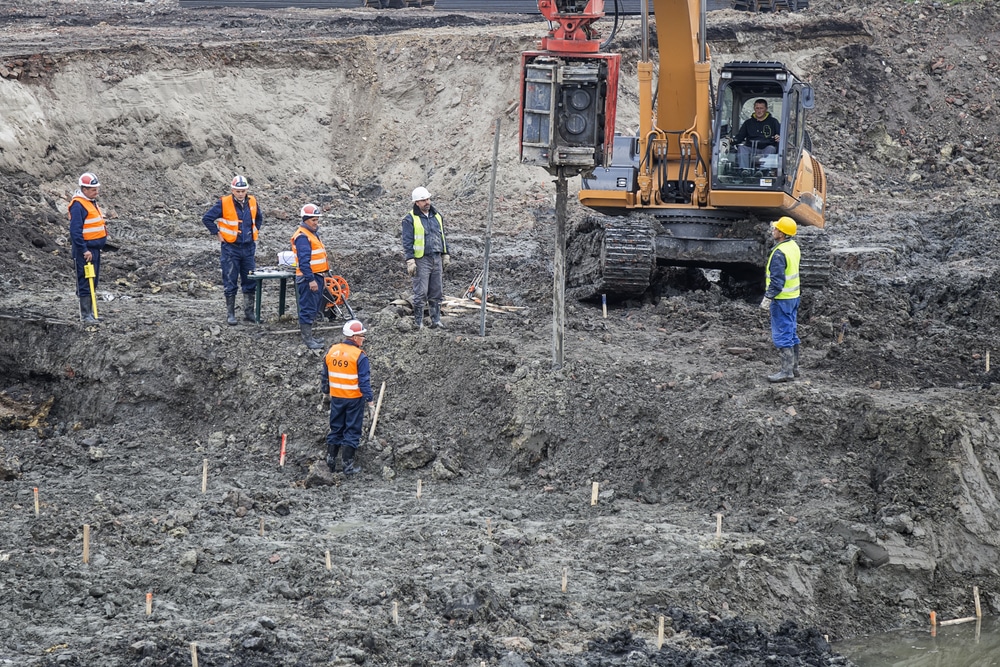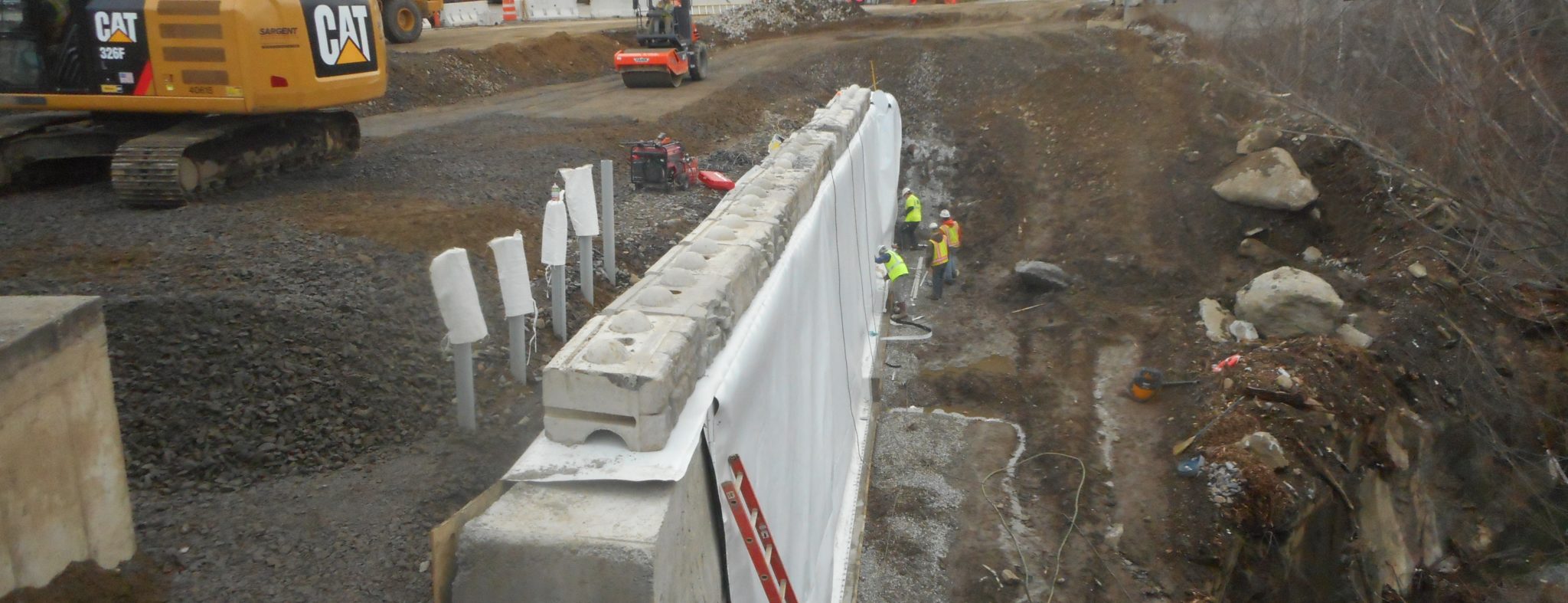A Comprehensive Guide to Coming To Be a Successful Geotech Engineer
Wiki Article
Recognizing the Comprehensive Role of Geotechnical Engineers in Ground Investigation and Dirt Analysis for Building Tasks
Geotechnical designers are integral to the success of building projects, supplying necessary understandings with comprehensive ground examinations and dirt evaluation. Their competence in evaluating dirt habits and using innovative screening techniques informs vital decisions that support architectural honesty and security. By working together and identifying potential hazards with multidisciplinary groups, these professionals considerably affect task end results, consisting of effectiveness and cost-effectiveness. Nevertheless, the details of their duty usually expand past these features, triggering a much deeper expedition into the methods they employ and the ramifications of their searchings for on general project viability.Duty of Geotechnical Designers
The critical role of geotechnical designers in construction jobs can not be overstated, as they supply vital insights into soil actions and site problems. These professionals are charged with evaluating the viability of the ground for numerous kinds of frameworks, ensuring safety and security throughout the construction process. Their experience includes a wide variety of tasks, consisting of website characterization, soil tasting, and research laboratory testing, which are important for determining the physical and mechanical residential properties of the dirt.Geotechnical engineers utilize their searchings for to develop foundational styles that accommodate load-bearing requirements and minimize dangers connected to dirt incline, negotiation, and liquefaction stability. They play a vital function in determining prospective dangers, such as groundwater variations and contamination, which can dramatically impact job stability. In addition, they team up with designers, civil designers, and professionals to ensure that geotechnical considerations are incorporated into the overall style and building and construction stages.
Ground Investigation Strategies
Ground investigation techniques develop the foundation of geotechnical engineering, enabling designers to obtain an extensive understanding of subsurface problems. These methods are important for analyzing dirt buildings, figuring out groundwater levels, and determining potential geological hazards.Usual techniques include borehole drilling, which enables the removal of soil examples at various midsts, giving crucial information for analysis. Additionally, sitting testing techniques, such as Common Infiltration Examinations (SPT) and Cone Penetration Examinations (CPT), are utilized to examine dirt toughness and density directly in the ground.
Geophysical methods likewise play a substantial duty in ground examinations. Methods such as seismic surveys and electrical resistivity tomography help assess subsurface characteristics without substantial excavation. civil consulting engineers. These non-invasive approaches are especially advantageous in huge or delicate locations where interruption should be lessened
Moreover, exploratory trenches can be dug deep into to visually check soil layers and identify any kind of anomalies. Each of these techniques adds distinct insights, permitting geotechnical engineers to create exact website assessments and notify layout choices. In recap, a combination of these ground investigation strategies is important for successful building projects, making certain safety and structural honesty.
Soil Analysis Techniques
Dirt analysis techniques are important for recognizing the physical and chemical properties of soil, which directly influence the style and construction of foundations and various other structures. Different methods are utilized to evaluate soil features, guaranteeing that geotechnical engineers get exact data for notified decision-making.One commonly utilized approach is grain size evaluation, which figures out the circulation of particle dimensions within a soil sample. This is vital for identifying soil types and anticipating their habits under load. Another vital method is Atterberg limitations testing, which assesses the plasticity and wetness content of fine-grained soils, offering understandings right into their engineering residential or More hints commercial properties.

Field examinations, such as Common Penetration Examinations (SPT) and Cone Infiltration Examinations (CPT), offer important in-situ information concerning soil stamina and stratification. Jointly, these soil evaluation methods form the structure of geotechnical examination, permitting engineers to create safe and reliable structures customized to the certain problems of the website.
Threat Mitigation Techniques
Implementing efficient danger reduction approaches is crucial for geotechnical designers to resolve potential obstacles in building and construction jobs. These approaches are important in determining, examining, and handling risks connected with dirt conditions, site stability, and groundwater variations, which can negatively impact project results.One main strategy includes performing complete website examinations that use sophisticated geophysical techniques and extensive dirt sampling. By getting precise data on subsurface problems, engineers can make informed decisions on layout and construction techniques. In addition, employing predictive modeling devices enables the simulation of different circumstances, allowing engineers to anticipate prospective troubles and execute safety nets.
In addition, developing clear interaction channels among job stakeholders promotes a collective technique to risk management. Normal updates and assessments guarantee that all events recognize the advancing site problems and can adapt their techniques accordingly.

Impact on Building Jobs
The performance of threat reduction techniques straight affects the overall success of building and construction jobs. Geotechnical engineers play a pivotal function in this domain, as their know-how in ground examination and soil evaluation informs critical choices throughout the building and construction procedure. By precisely assessing dirt conditions and identifying prospective hazards, these specialists allow job groups to design effective services that lower dangers connected with ground instability, water seepage, and various other geotechnical challenges.The effect of detailed geotechnical evaluation is evident in numerous facets of building and construction projects, including expense monitoring, task timelines, and architectural integrity. Early recognition of problems permits prompt treatments, lessening look what i found expensive hold-ups and budget overruns. An extensive understanding of site conditions enhances the style and engineering process, making certain that structures are built to stand up to ecological pressures and potential natural calamities.
Eventually, the payments of geotechnical designers are indispensable to the successful execution of building and construction tasks. Their job not only cultivates safety and security and conformity with laws but also boosts the long-term sustainability of frameworks, guaranteeing that they execute effectively throughout their desired life-span. The cooperation between other stakeholders and geotechnical groups is necessary for achieving ideal end results in construction ventures.
Final Thought
In conclusion, geotechnical engineers do a vital feature in construction projects via detailed ground examinations and soil analyses. Their expertise in evaluating dirt behavior, utilizing numerous examination techniques, and executing danger mitigation methods dramatically adds to the structural integrity and safety of developed environments. By teaming up with multidisciplinary teams, these experts improve job performance and ensure conformity with security requirements, eventually causing successful building end results and decreased potential hazards.Geotechnical designers are important to the success of building projects, offering vital insights with thorough ground investigations and dirt analysis.The crucial role of geotechnical engineers in construction tasks can not be overemphasized, as they offer crucial understandings into dirt actions and website problems. Their proficiency includes a large array of activities, including site characterization, dirt tasting, and lab screening, which are essential for establishing the physical and mechanical properties of the soil.
By properly analyzing dirt conditions and identifying find here possible dangers, these specialists allow project groups to devise reliable services that lower risks connected with ground instability, water infiltration, and various other geotechnical challenges.
In conclusion, geotechnical engineers execute a critical feature in building jobs with comprehensive ground investigations and dirt evaluations.
Report this wiki page